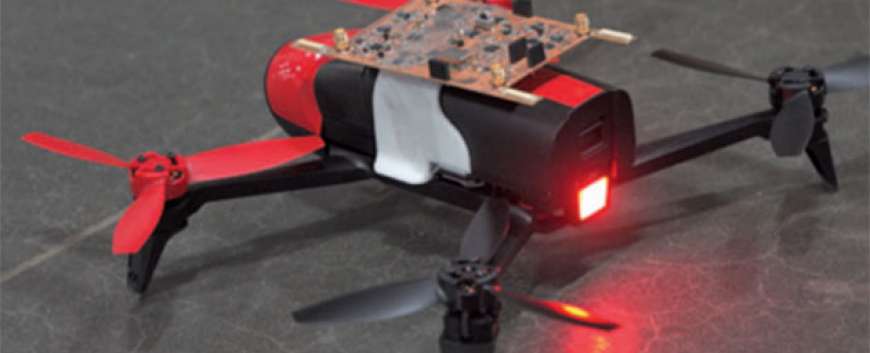Signal Processing Opens the Internet of Things to a New World of Possibilities: Research Leads to New Internet of Things Technologies and Applications
Top Reasons to Join SPS Today!
1. IEEE Signal Processing Magazine
2. Signal Processing Digital Library*
3. Inside Signal Processing Newsletter
4. SPS Resource Center
5. Career advancement & recognition
6. Discounts on conferences and publications
7. Professional networking
8. Communities for students, young professionals, and women
9. Volunteer opportunities
10. Coming soon! PDH/CEU credits
Click here to learn more.
Signal Processing Opens the Internet of Things to a New World of Possibilities: Research Leads to New Internet of Things Technologies and Applications
The Internet of Things (IoT ) refers to the wireless connection of ordinary objects, such as vehicles, cash machines, door locks, cameras, industrial controls, and municipal traffic systems, to the Internet. Research firm BI Intelligence predicts that 22.5 billion devices will be connected to the IoT in 2021, compared to 6.6 billion in 2016.
Signal processing is playing a significant role in expanding the number of IoT technologies and applications. Realizing that the IoT has emerged as perhaps the most important new technology since the arrival of the Internet itself, researchers worldwide are now turning to signal processing to support and augment new IoT services and make existing applications less expensive and more practical.
Up in the air
One of the most promising IoT applications is the use of small aerial drones to read radio-frequency identification (RFID) tags affixed to boxes, crates, and other objects inside distribution centers and similar storage sites. Looking to enhance the process, researchers from the Massachusetts Institute of Technology (MIT) have developed a system that allows small drones to read RFID tags from tens of meters away while identifying the tags’ locations with an average error measured in centimeters. The researchers envision a system that could be used in large facilities for continuous monitoring to prevent inventory mismatches and pinpoint the location of individual items so employees can rapidly and reliably meet customer requests.
Wireless, battery-free RFID tags are inexpensive—approximately US$.05–.10 each—and disposable, offering a huge potential to revolutionize the logistics and supply-chain industry. “Today, their communication range is fundamentally crippled by their battery-free nature, demanding a reader standing nearby to perform wireless charging,” explains lead researcher Yunfei Ma, a postdoctoral fellow in MIT’s Signal Kinetics research group, headed by Fadel Adib, an assistant professor of media arts and sciences. There are many misread problems if an RFID tag is occluded or misoriented, Ma notes. Also on the research team is Nicholas Selby, a mechanical engineering MIT graduate student.
The project aims to streamline storage-site tag reading with RFly, a dronebased RFID technology (Figure 1). “RFly builds a lightweight, airborne, full-duplex relay that amplifies and forwards an RFID reader’s commands to an RFID tag, and also relays the RFID tag’s response back to the reader,” Ma says. “In doing so, RFly is able to extend today’s battery-free network communication range by ten times and coverage area by 100 times."
SPS Social Media
- IEEE SPS Facebook Page https://www.facebook.com/ieeeSPS
- IEEE SPS X Page https://x.com/IEEEsps
- IEEE SPS Instagram Page https://www.instagram.com/ieeesps/?hl=en
- IEEE SPS LinkedIn Page https://www.linkedin.com/company/ieeesps/
- IEEE SPS YouTube Channel https://www.youtube.com/ieeeSPS













